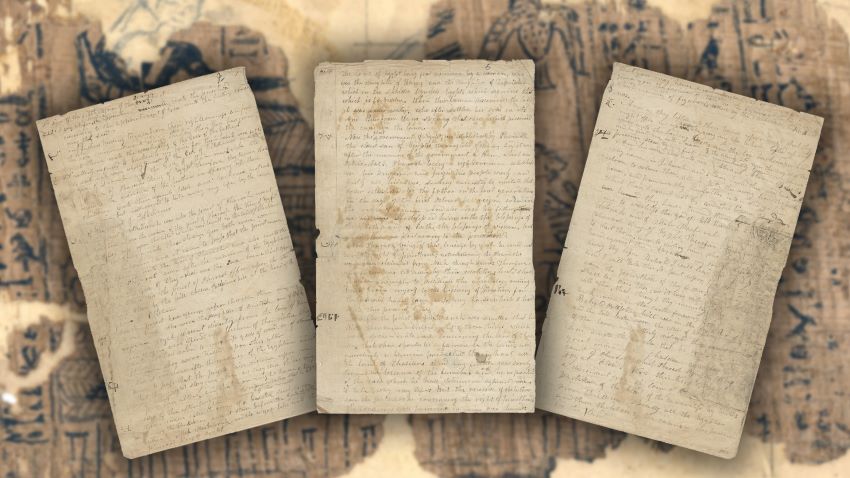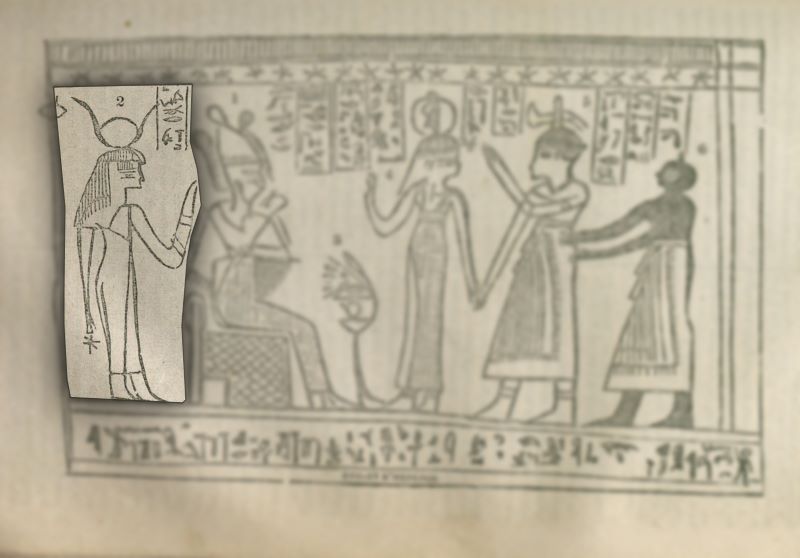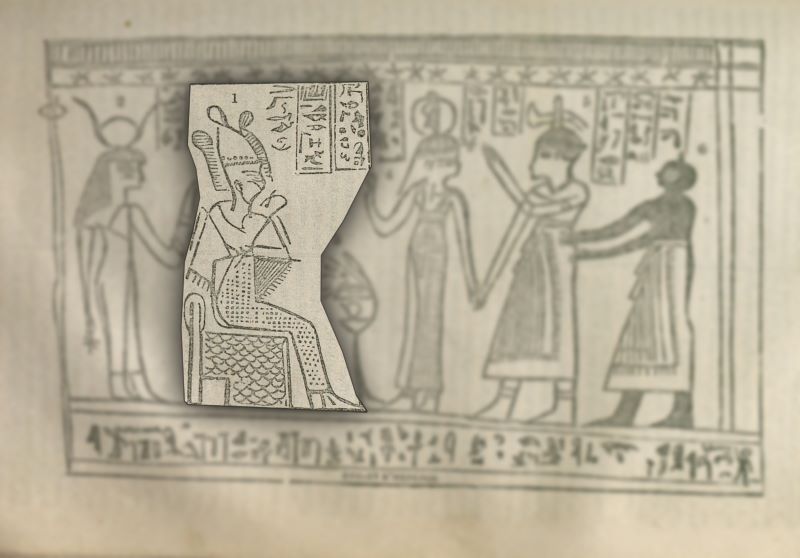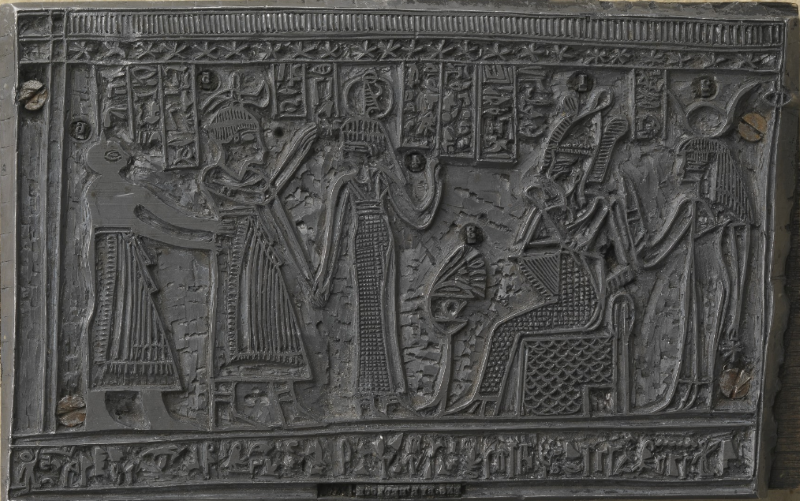Book of Abraham Insight #40
It is clear that Joseph Smith’s inspired translation of the Book of Abraham was connected to the Egyptian papyri he acquired in the summer of 1835. However, less clear is the precise relationship shared between the Book of Abraham text and the papyri.
Several theories posit ways in which the Book of Abraham text relates to the papyri. The Church of Jesus Christ of Latter-day Saints maintains that Joseph Smith translated the Book of Abraham from papyri, but they do not specify which papyri. Theories about the relationship may be categorized under three heads: Joseph Smith produced the Book of Abraham (1) from the fragments of papyri that we still have, (2) from papyri that we no longer have, or (3) without the aid of any of the Joseph Smith Papyri.1
Exploring these theories individually reveals that while they each have some evidence for them, “not all of the theories account equally for the historical evidence. It is worth knowing some of the problems associated with the various theories. Whichever theory one chooses to follow, one must be prepared to deal with the problems posed by the evidence that the theory cannot account for.”2
Theory 1: Joseph Smith translated the Book of Abraham from surviving papyri fragments
The proponents of this theory maintain that Joseph Smith derived the Book of Abraham from the surviving fragments of the Hor Book of Breathings (P. Joseph Smith I, XI+X). This theory is mainly advocated by critics of Joseph Smith who want to cast doubt on the Prophet’s claims to inspiration, since these surviving fragments do not translate as the Book of Abraham.3 Some Latter-day Saint scholars also believe Joseph Smith attempted to translate the Book of Abraham from the surviving papyri fragments based on their interpretation of the historical data.4
The two main points of evidence cited by proponents of this theory are: (1) the hieratic Egyptian characters from P. Joseph Smith XI that appear in the margins of the early Book of Abraham manuscripts, and (2) the apparent reference to Facsimile 1 (the illustration in P. Joseph Smith I) at Abraham 1:12, 14.5 At first glance these two pieces of evidence may appear persuasive, but other scholars have disputed their explanatory power in connecting the English text of the Book of Abraham to the surviving fragments.
For example, it is not clear who added the hieratic characters in the margins of the Book of Abraham manuscripts or when they were added. It is also not clear what the scribe was thinking when they added the characters. It has been widely assumed that they were added at Joseph Smith’s direct prompting during the process of translation, but this is not certain.6 “Though the juxtaposition of the characters and Book of Abraham text implies a relationship between the two, the exact nature of that relationship is not stated” and is complicated by the evidence that the manuscripts which bear these marginal characters appear to be copies of an earlier text that is no longer extant.7 There is thus no “demonstrable relationship between the characters on the papyri and the text of the Book of Abraham.”8 Any assumed relationship between the two remains an assumption.

The second point of evidence (the reference to Facsimile 1 at Abraham 1:12, 14) is likewise more complicated than is often supposed. For starters, scholars have recognized that the last line of Abraham 1:12 (““I will refer you to the representation at the commencement of this record”) and all of Abraham 1:14 (“That you may have an understanding of these gods, I have given you the fashion of them in the figures at the beginning, which manner of figures is called by the Chaldeans Rahleenos, which signifies hieroglyphics”) are interlinear insertions in the earliest manuscript copy of the Book of Abraham.9 What’s more, even if one assumes these references were original and not added later, “the reference [at Abraham 1:12, 14] indicates that the vignette depicting the altar and idols is not adjacent to the text but some distance from it.”10 In other words, the reference at Abraham 1:12, 14 could be read as indicating just the opposite of how proponents of this theory understand it.
Theory 2: Joseph Smith translated the Book of Abraham from missing papyri fragments
This theory has gained traction as scholars have looked more closely at nineteenth century eyewitness descriptions of the papyri believed to be the source of the Book of Abraham.
The nineteenth-century eyewitnesses, both Mormon and non-Mormon, favorable and hostile to the Church, agree that the Book of Abraham was translated from a long roll of papyrus that was still a long roll in the 1840s and 1850s. The current fragments of the Joseph Smith Papyri, however, were all mounted on heavy paper and placed in glass frames in 1837. None of them can be the long roll described in the 1840s and 1850s. So these fragments are specifically not the source of the Book of Abraham according to the eyewitnesses.11
The main advantage to this theory is that it can account for the nineteenth century eyewitness evidence. It also answers the objections raised by those who rightly point out that the Hor Book of Breathings is not the Book of Abraham. However, this theory has been criticized on the grounds that while there are indeed missing portions of papyri (for example, Facsimiles 2 and 3 are no longer extant) it is questionable to some whether there was enough missing papyri to accommodate a hypothetical missing Book of Abraham text.12 Furthermore, even though “this theory accounts for [the eyewitness] evidence” it is still “frustrating to many people. Because the papyri are no longer extant, there is no possible way to check Joseph Smith’s translation of the Book of Abraham.”13
Theory 3: Joseph Smith translated the Book of Abraham without any physical papyri
This theory argues that Joseph Smith translated the Book of Abraham directly by revelation without using any physical papyri. As an essay published by the Church recently articulated,
Joseph’s study of the papyri may have led to a revelation about key events and teachings in the life of Abraham, much as he had earlier received a revelation about the life of Moses while studying the Bible. This view assumes a broader definition of the words translator and translation. According to this view, Joseph’s translation was not a literal rendering of the papyri as a conventional translation would be. Rather, the physical artifacts provided an occasion for meditation, reflection, and revelation. They catalyzed a process whereby God gave to Joseph Smith a revelation about the life of Abraham, even if that revelation did not directly correlate to the characters on the papyri.14
Those who adopt this theory urge Latter-day Saints to reconsider the scope and mechanism of “translation” in Joseph Smith’s theology and scriptural productions.15 The strength of this theory is that it is consistent with the Prophet’s other scriptural productions. “One advantage is that in Doctrine and Covenants section 7, Joseph Smith translated an ancient papyrus that he never had in his possession; hence, there is a precedent for Joseph Smith translating a papyrus that was not in his possession, and so there is no reason to suppose that he had to have the papyrus of the Book of Abraham in his possession either.”16 At the same time, however, the main drawback to this theory is that Joseph Smith himself believed that he possessed a physical record of Abraham.17
“Given our current state of knowledge,” concludes one Latter-day Saint scholar, “the theory that Joseph Smith translated the Book of Abraham from papyri that we no longer have accounts for the most evidence with the fewest problems. Even so, for none of the theories is the evidence as neat or as compelling as one might wish.”18 It could even be argued that some of these (and other) theories might be combined to form new paradigms. “As scholars continue to find, research, and analyze the evidence that bears on this subject, future studies will undoubtedly illuminate other theories that have not yet been conceived.”19
Since The Church of Jesus Christ of Latter-day Saints has not taken an official stance on how the translation of the Book of Abraham was accomplished other than by revelation, and since the evidence is not as clear or as complete as we might like, it would perhaps be wiser for readers to worry less about the method of the translation and more about the results.
Further Reading
John Gee, “The Relationship of the Book of Abraham Text to the Papyri,” in An Introduction to the Book of Abraham (Salt Lake City and Provo, UT: Deseret Book and Religious Studies Center, Brigham Young University, 2017), 83–86.
Kerry Muhlestein, “Joseph Smith and Egyptian Artifacts: A Model for Evaluating the Prophetic Nature of the Prophet’s Ideas about the Ancient World,” BYU Studies Quarterly 55, no. 3 (2016): 35–82.
Kerry Muhlestein, “The Explanation-Defying Book of Abraham,” in A Reason for Faith: Navigating LDS Doctrine and Church History, ed. Laura Harris Hales (Salt Lake City: Deseret Book and Provo, UT: Brigham Young University’s Religious Studies Center, 2016), 79–91.
Footnotes
1 John Gee, An Introduction to the Book of Abraham (Salt Lake City and Provo, UT: Deseret Book and Religious Studies Center, Brigham Young University, 2017), 83.
2 Gee, An Introduction to the Book of Abraham, 84.
3 Michael D. Rhodes, The Hor Book of Breathings: A Translation and Commentary (Provo, UT: Foundation for Ancient Research and Mormon Studies, 2002).
4 Brian M. Hauglid, “The Book of Abraham and the Egyptian Project: ‘A Knowledge of Hidden Languages’,” in Approaching Antiquity: Joseph Smith and the Ancient World, edited by Lincoln H. Blumell, Matthew J. Grey, and Andrew H. Hedges (Provo, UT: Religious Studies Center; Salt Lake City: Deseret Book, 2015), 474–511.
5 Grant S. Heward and Jerald Tanner, “The Source of the Book of Abraham Identified,” Dialogue: A Journal of Mormon Thought 3, no. 2 (1968): 89–97; Christopher C. Smith, “‘That which Is Lost’: Assessing the State of Preservation of the Joseph Smith Papyri,” The John Whitmer Historical Association Journal 31, no. 1 (Spring/Summer 2011): 73.
6 See the discussion in Kerry Muhlestein, “Assessing the Joseph Smith Papyri: An Introduction to the Historiography of their Acquisitions, Translations, and Interpretations,” Interpreter: A Journal of Mormon Scripture 22 (2016): 32–36; “The Explanation-Defying Book of Abraham,” in A Reason for Faith: Navigating LDS Doctrine and Church History, ed. Laura Harris Hales (Salt Lake City: Deseret Book and Provo, UT: Brigham Young University’s Religious Studies Center, 2016), 81–82, 84–85; “Egyptian Papyri and the Book of Abraham: A Faithful, Egyptological Point of View,” in No Weapon Shall Prosper: New Light on Sensitive Issues, ed. Robert L. Millet (Provo, UT: Religious Studies Center, Brigham Young University; Salt Lake City: Deseret Book, 2011), 228–229.
7 Brent M. Rogers et al., eds., The Joseph Smith Papers, Documents, Volume 5: October 1835–January 1838 (Salt Lake City, UT: The Church Historian’s Press, 2017), 74–75.
8 Muhlestein, “The Explanation-Defying Book of Abraham,” 85.
9 Gee, An Introduction to the Book of Abraham, 143; Rogers et al., eds., The Joseph Smith Papers, Documents, Volume 5, 78; Robin Scott Jensen and Brian M. Hauglid, eds., The Joseph Smith Papers, Revelations and Translations, Volume 4: Book of Abraham and Related Manuscripts (Salt Lake City, UT: The Church Historian’s Press, 2018), 195–196nn57, 64.
10 Muhlestein, “Assessing the Joseph Smith Papyri,” 29–32, quote at 30; cf. “Egyptian Papyri and the Book of Abraham,” 225–226.
11 Gee, An Introduction to the Book of Abraham, 85; cf. pp. 4–5; “Eyewitness, Hearsay, and Physical Evidence of the Joseph Smith Papyri,” in The Disciple as Witness: Essays on Latter-day Saint History and Doctrine in Honor of Richard Lloyd Anderson, ed. Stephen D. Ricks, Donald W. Parry, and Andrew H. Hedges (Provo, UT: FARMS, 2000), 175–217; Kerry Muhlestein, “Papyri and Presumptions: A Careful Examination of the Eyewitness Accounts Associated with the Joseph Smith Papyri,” Journal of Mormon History 42, no. 4 (October 2016): 31–50.
12 One of the main points of contention is whether it can be mathematically calculated how much papyrus is currently missing, and what was potentially contained on the missing portion. For different arguments, see John Gee, “Some Puzzles from the Joseph Smith Papyri,” FARMS Review 20, no. 1 (2008): 117–123; Andrew W. Cook and Christopher C. Smith, “The Original Length of the Scroll of Hôr,” Dialogue: A Journal of Mormon Thought 43, no. 4 (2010): 1–42; “Formulas and Faith,” Journal of the Book of Mormon and Other Restoration Scripture 21, no. 1 (2012): 60–65; Smith, “‘That which Is Lost’,” 69–83; Muhlestein, “Papyri and Presumptions,” 31–50.
13 Gee, An Introduction to the Book of Abraham, 85.
14 “Translation and Historicity of the Book of Abraham,” Gospel Topics.
15 Karl C. Sandberg, “Knowing Brother Joseph Again: The Book of Abraham, and Joseph Smith as Translator,” Dialogue: A Journal of Mormon Thought 22, no. 4 (Winter 1989): 17–38; Terryl Givens, The Pearl of Greatest Price: Mormonism’s Most Controversial Scripture (New York, N.Y.: Oxford University Press, 2019), 180–202.
16 Gee, An Introduction to the Book of Abraham, 85.
17 Gee, An Introduction to the Book of Abraham, 85–86.
18 Gee, An Introduction to the Book of Abraham, 85.
19 Kerry Muhlestein, “Joseph Smith and Egyptian Artifacts: A Model for Evaluating the Prophetic Nature of the Prophet’s Ideas about the Ancient World,” BYU Studies Quarterly 55, no. 3 (2016): 67.























